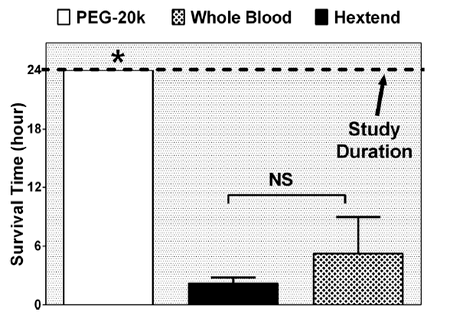Background
When a patient loses a lot of blood, like after a car accident, first responders and doctors treat the patient by providing intravenous solutions such as whole blood or saline solution.
Their goal is to raise blood pressure and make sure there is enough hemoglobin to transport oxygen around the body.
Sometimes that approach is effective if the patient receives enough blood in time. In other cases, the patient may not recover or could develop other medical issues.

The problem
The medical community started to recognize another problem from blood loss that prevents patients from recovery:
When cells in any part of the body do not receive blood and therefore oxygen, their energy system shuts down and the cell begins to swell up with water.
As more cells swell up they press on the capillaries which normally transport blood to the cells.
Now even when the patient is given the blood, the oxygen can’t reach the cells effectively because the capillaries are being squeezed. The medical community calls this the “no reflow phenomenon”.

The Solution: PEG-20k
Working to solve this problem for decades, VCU and Dr. Mangino discovered a common chemical, PEG (Poly Ethylene Glycol), at certain molecular sizes could solve the no reflow problem. PEG is a chemical that attracts water and is commonly used as a laxative. When the solution PEG-20k is given intravenously to a patient who has suffered blood loss:



Step 1
Water is quickly moved out of patient blood vessel cells

Step 2
The amount of pressure on the capillaries is reduced



Step 3
Blood flow resumes through the capillaries to deliver oxygen to cells.

Findings
In recent studies, PEG-20k performed as much as 10 times better than conventional approaches in improving recovery and survival from blood loss.

